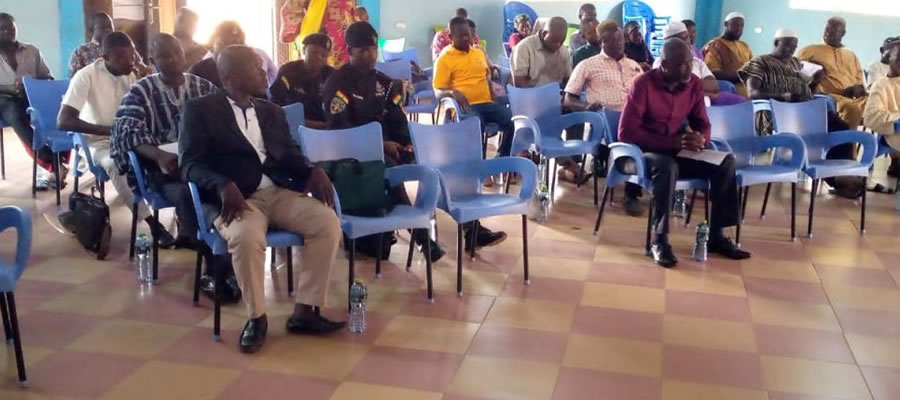

Location and Size
The District is located in the North-Eastern Northern Region, roughly between latitudes 9°30° and 10°30
Topology and Drainage
The topography of the district is generally undulating with numerous small streams draining it. The district has a number of smaller valleys with larger valleys found towards the periphery where smaller streams merge into larger ones. Such valleys are found in the Sakulo and Nambungu areas.
The only major river identified is the Nasia which flows between Namburugu and Bagli. The Nasia and it tributaries divides the district into two (north and south) making ihc northern half inaccessible especially during the rainy season. Areas to the north are thus appropriately tagged "overseas". Tributaries of the Nabogu river also flow between Dibolo and Namburugu. All the streams can be described as intermittent. The Nasia reduces in volume during the long dry season whereas all other streams dry up completely. In the rainy season however, all the rivers bounces back to "life" they increase in volume and flood the immediate land thereby cutting off most communities during the period. Most roads are also rendered unmotorable.
Climate and Vegetation
The climate reflects atypical tropical continental climate experienced in northern Ghana. There is a rainy season that lasts from May - October, peaking in August and September. The rest of the year is virtually dry. Rainfall amount is between 900 and 1000mm per annum.
Temperatures are high throughout the year with the highest of 36°C or above in March and April. Low temperatures are experienced between November and February (the harmattan period). The vegetation is a typical guinea savannah type, characterized by tall grasses interspersed with drought resistant trees such as the shea and dawadawa.
Geology and Soil
The district lies entirely within the voltaian sand stone basin dominated by sandstones, shales, siltstones and minor lime stones. The northern tip of the district is underlain by lower voltain, which consist of rocks, dominated by shales and sandstones. The soils are mainly savannah ochrosols, ground water laterites formed over granite and voltain shales. Small areas of savannah ochrosols with some lithosoles and brunosols are very low. The laterites are similar in acidity and nutrient level to the ochrosols, but are poorer in physicals properties, with substantial amounts of concretionary gravel layers near the top horizons and more suited for road and other constructional works than supporting plant roots systems.
Despite gentle slopes, the soils are highly vulnerable to sheet erosion and in some areas, gully erosion also occurs. This condition occurs primarily because of the annual burning of the natural vegetation, leaving the soils exposed to the normally high intensity rams (up to 200mm per hour) at the beginning of the rainy season.
The continuous erosion over many years has removed most of the top soils and depleted or destroyed its organic matter content. Such a situation does not allow the soil fauna to thrive and keep the top soil layers open and created for healthy plant roots to develop. It results in serious compaction, with considerable reduction in rainfall infiltration rate.
These soils even when affected by erosion and reduced fertility, have some potential for agriculture if their available nutrients and water are managed sensibly, including appropriate organise matter supplementation measures to restore a better soil water infiltration rate, will depend on the extend to which is possible to manage the recurring annual bush fires and extend the rainfall surface retention time to facilitate increase in the amount that gets to the plant rooting zones, to the level of the soil water holding capacity.
Date Created : 11/30/2017 3:07:43 AM








 facebook
facebook
 twitter
twitter
 Youtube
Youtube
 +233 593 831 280
+233 593 831 280 0800 430 430
0800 430 430 GPS: GE-231-4383
GPS: GE-231-4383 info@ghanadistricts.com
info@ghanadistricts.com Box GP1044, Accra, Ghana
Box GP1044, Accra, Ghana